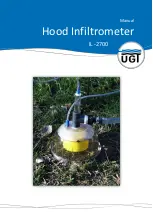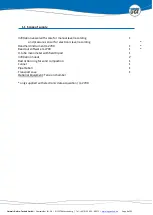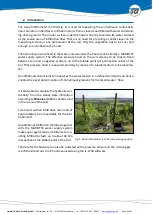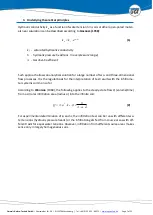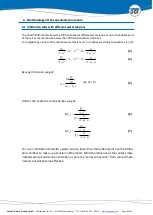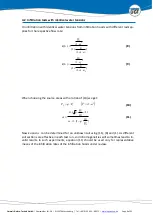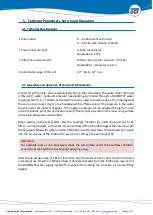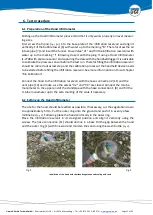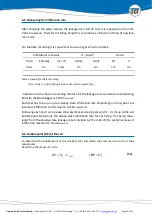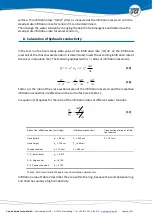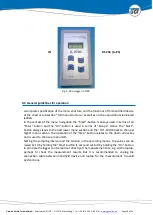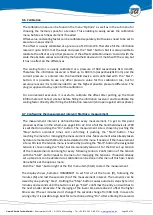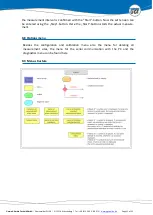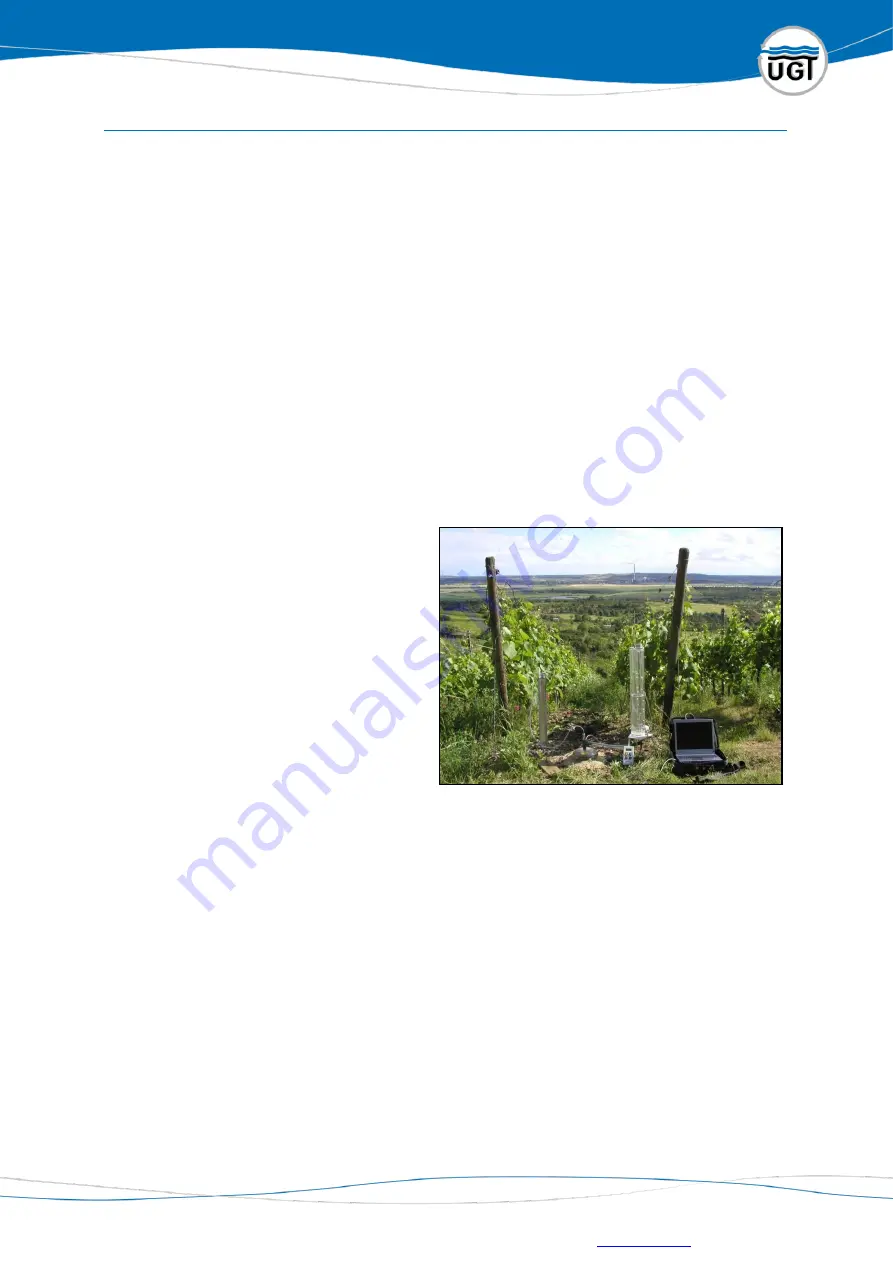
Umwelt-Geräte-Technik GmbH | Eberswalder Str. 58 | D-15374 Müncheberg | Tel.: +49 (0) 33 43 2 - 89 575 |
2.
Introduction
The Hood Infiltrometer IL-2700 (Fig. 1) is used for measuring the soil hydraulic conductivity
near saturation in field tests. Infiltration starts from a closed hood filled with water and stand-
ing on the ground. The circular surface under the hood is directly covered with water and acts
as the source area of infiltration flow. There is no need for providing a contact layer on the
measuring surface or any preparation of the soil. Only the vegetation has to be cut short
enough, to not influence the hood.
The hydraulic pressure head in the water volume under the hood is controlled by a MARIOTTE
water supply system. The effective pressure head on the soil surface can be chosen freely
between zero and a negative pressure up to the bubble point (air permeation value) of the
soil. That pressure head is measured precisely by means of a supplemental U-tube manome-
ter.
An additional soil tensiometer measures the water tension in a defined soil depth and hence
enables the exact determination of the hydraulic gradient for the recent water flow.
It is advisable to calculate the hydraulic con-
ductivity from the steady-state infiltration
according to W
OODING
(1968) as determined
in the course of the test.
Two hoods with an infiltration area ratio of
approximately 1:2 are available for the infil-
tration test.
An additional infiltration chamber together
with the MARIOTTE water supply system
makes up a regular tension infiltrometer en-
abling infiltration tests up to about 60 hPa
irrespective of the bubble point of the soil.
The data for the flowrate can also be collected with a pressure sensor and the micrologger
IL-2700 and read out to a PC and evaluated using the IL-2700 software
Fig. 1: Hood Infiltrometer IL-2700 in measuring position

